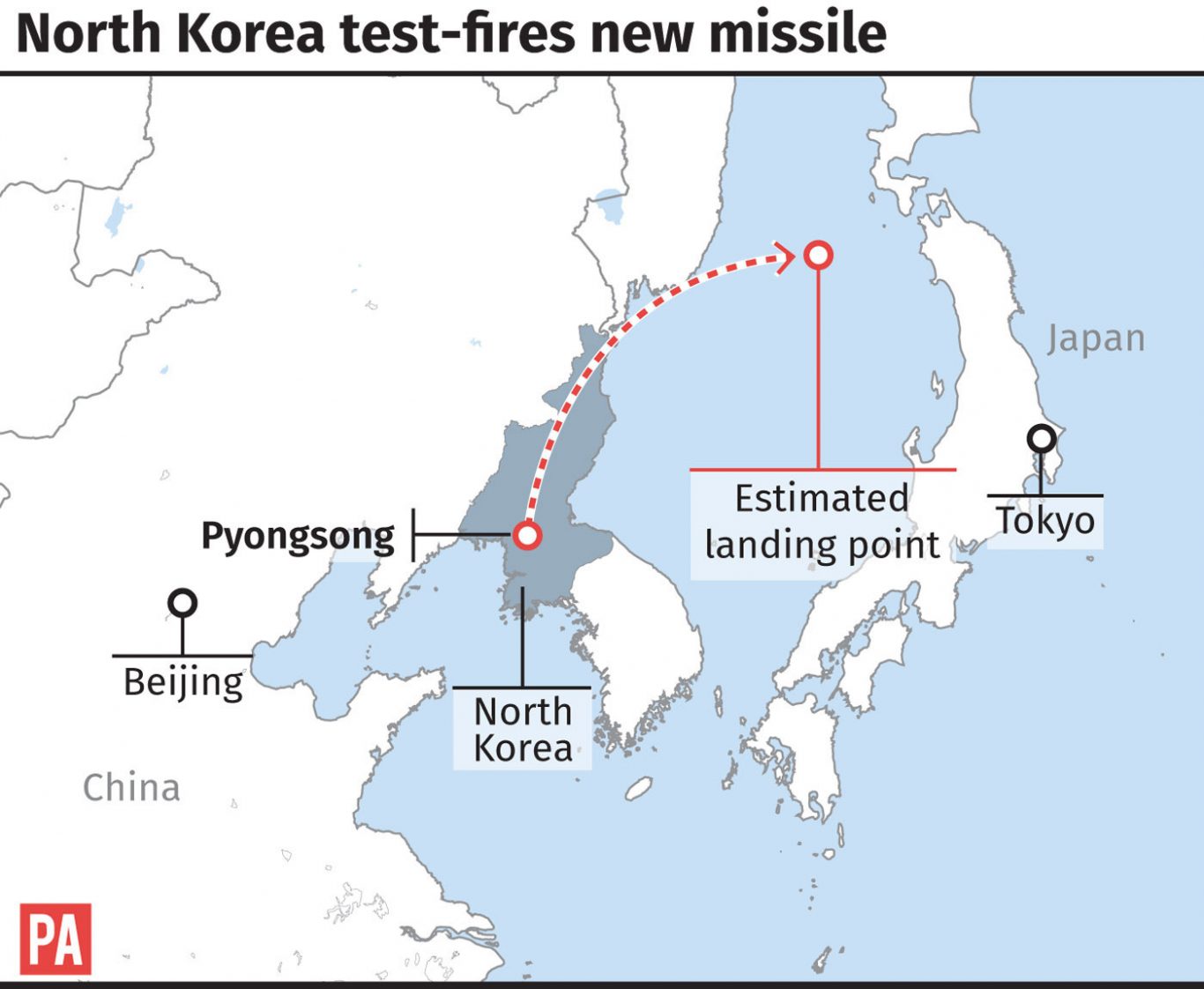NORTH KOREA has abruptly ended a 10-week pause in its weapons testing by launching a new type of intercontinental ballistic missile that some observers believe could put Washington and the entire eastern coast of the US in range.
The North said in a special televised announcement hours after the launch that it had successfully fired what it called the Hwasong-15, a new nuclear-capable intercontinental ballistic missile that is “significantly more” powerful than the North’s previously tested long-range weapon.
Outside governments and analysts backed up the North’s claim to a jump in missile capability.
A resumption of Pyongyang’s torrid testing pace in pursuit of its goal of a viable arsenal of nuclear-tipped missiles that can hit the US mainland had been widely expected, but the apparent power and suddenness of the new test still jolted the Korean Peninsula and Washington.
The launch, at 3:17 am local time and midday in the US capital, indicated an effort to perfect the element of surprise and to obtain maximum attention in the United States.
The firing is a clear message of defiance aimed at the Trump administration, which had just restored the North to a US list of terror sponsors.
It also ruins nascent diplomatic efforts, raises fears of war or a pre-emptive strike on the United States and casts a deeper shadow over the security of the Winter Olympics early next year in South Korea.
A rattled Seoul responded by almost immediately launching three of its own missiles in a show of force.
The South’s president, Moon Jae-in, expressed worry that North Korea’s growing missile threat could force the United States to attack the North before it masters a nuclear-tipped long-range missile, something experts say may be imminent.
“If North Korea completes a ballistic missile that could reach from one continent to another, the situation can spiral out of control,” Mr Moon said at an emergency meeting in Seoul, according to his office.
“We must stop a situation where North Korea miscalculates and threatens us with nuclear weapons or where the United States considers a pre-emptive strike.”
Mr Moon, a liberal who has been forced into a more hawkish stance by a stream of North Korean weapons tests, has repeatedly declared that there can be no US attack on the North without Seoul’s approval, but many here worry that Washington may act without South Korean input.
The launch is North Korea’s first since it fired an intermediate-range missile over Japan on September 15, and may have broken any efforts at diplomacy meant to end the North’s nuclear ambitions.
If flown on a standard trajectory, instead of Wednesday’s lofted angle, the missile would have a range of more than 13,000 kilometres (8,100 miles), said US scientist David Wright, a physicist who closely tracks North Korea’s missile and nuclear programs.
“Such a missile would have more than enough range to reach Washington DC, and in fact any part of the continental United States,” Mr Wright wrote in a blog post for the Union for Concerned Scientists.
Japanese Defence Minister Itsunori Onodera said the missile landed inside of Japan’s special economic zone in the Sea of Japan, about 250 kilometres (155 miles) west of Aomori, which is on the northern part of Japan’s main island of Honshu.
A big unknown, however, is the missile’s payload. If, as expected, it carried a light mock warhead, then its effective range would have been shorter, analysts said.
In response to the launch, US president Donald Trump said the United States will “take care of it.” He told reporters after the launch: “It is a situation that we will handle.”

Enjoy the convenience of having The Sunday Post delivered as a digital ePaper straight to your smartphone, tablet or computer.
Subscribe for only £5.49 a month and enjoy all the benefits of the printed paper as a digital replica.
Subscribe